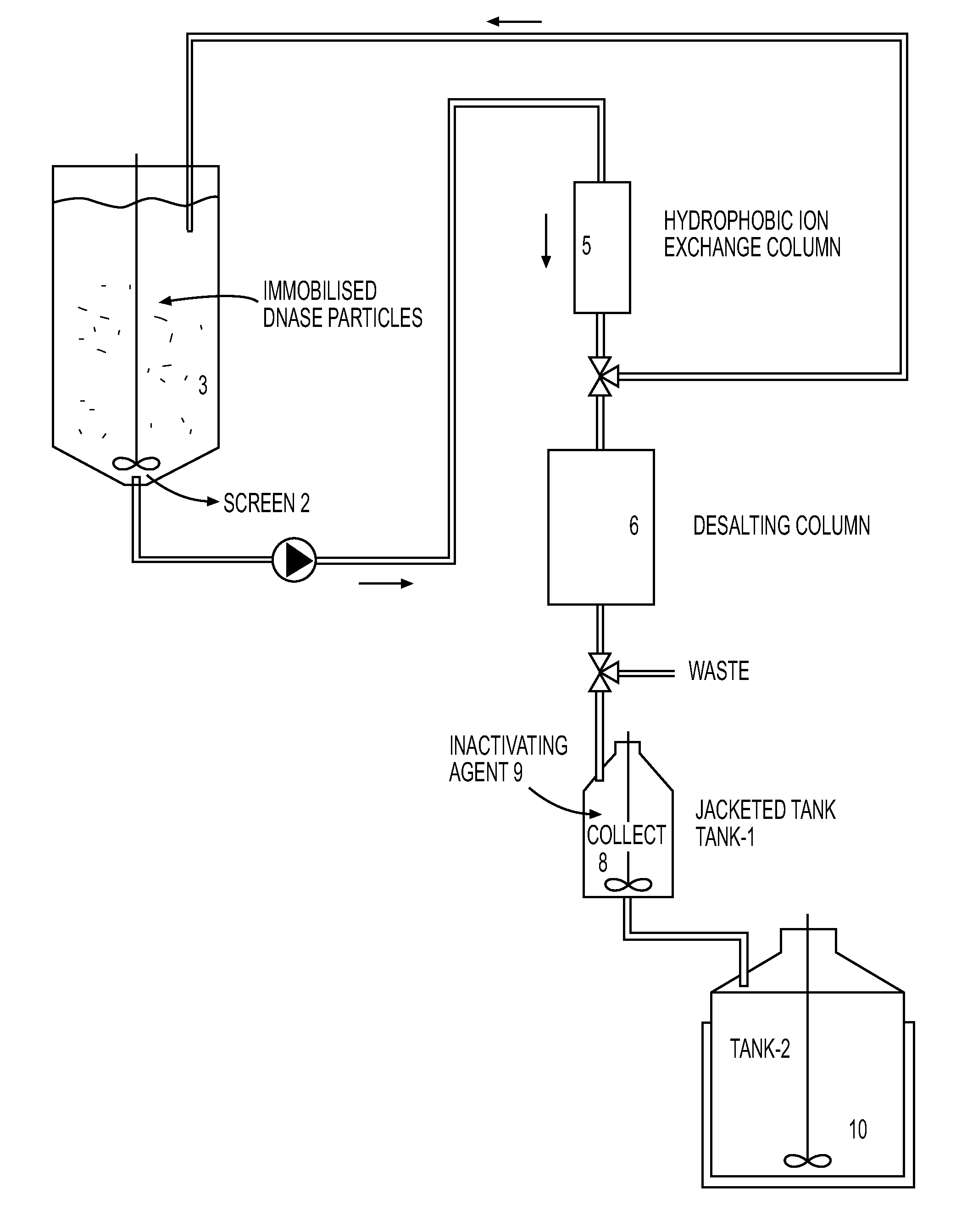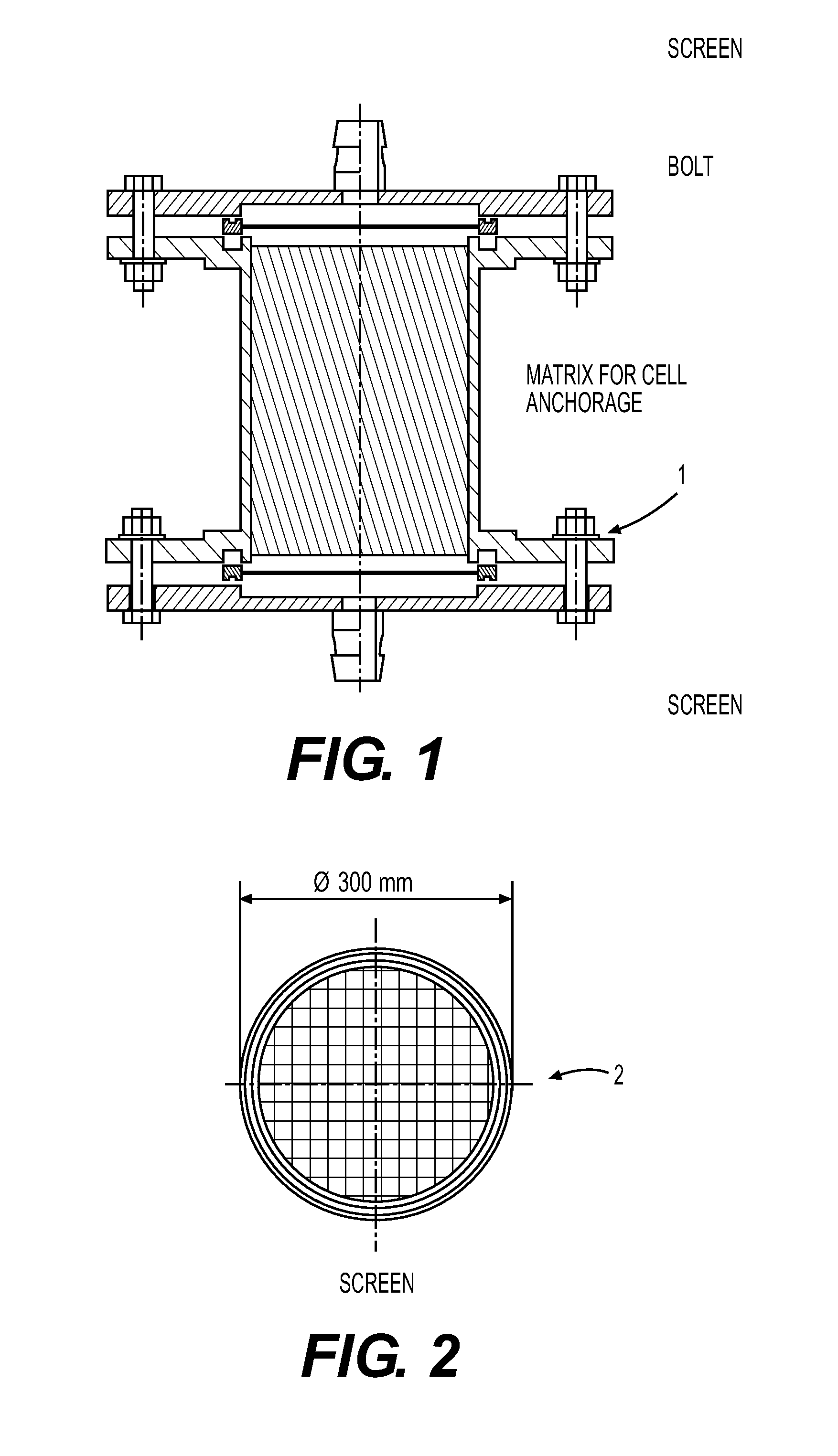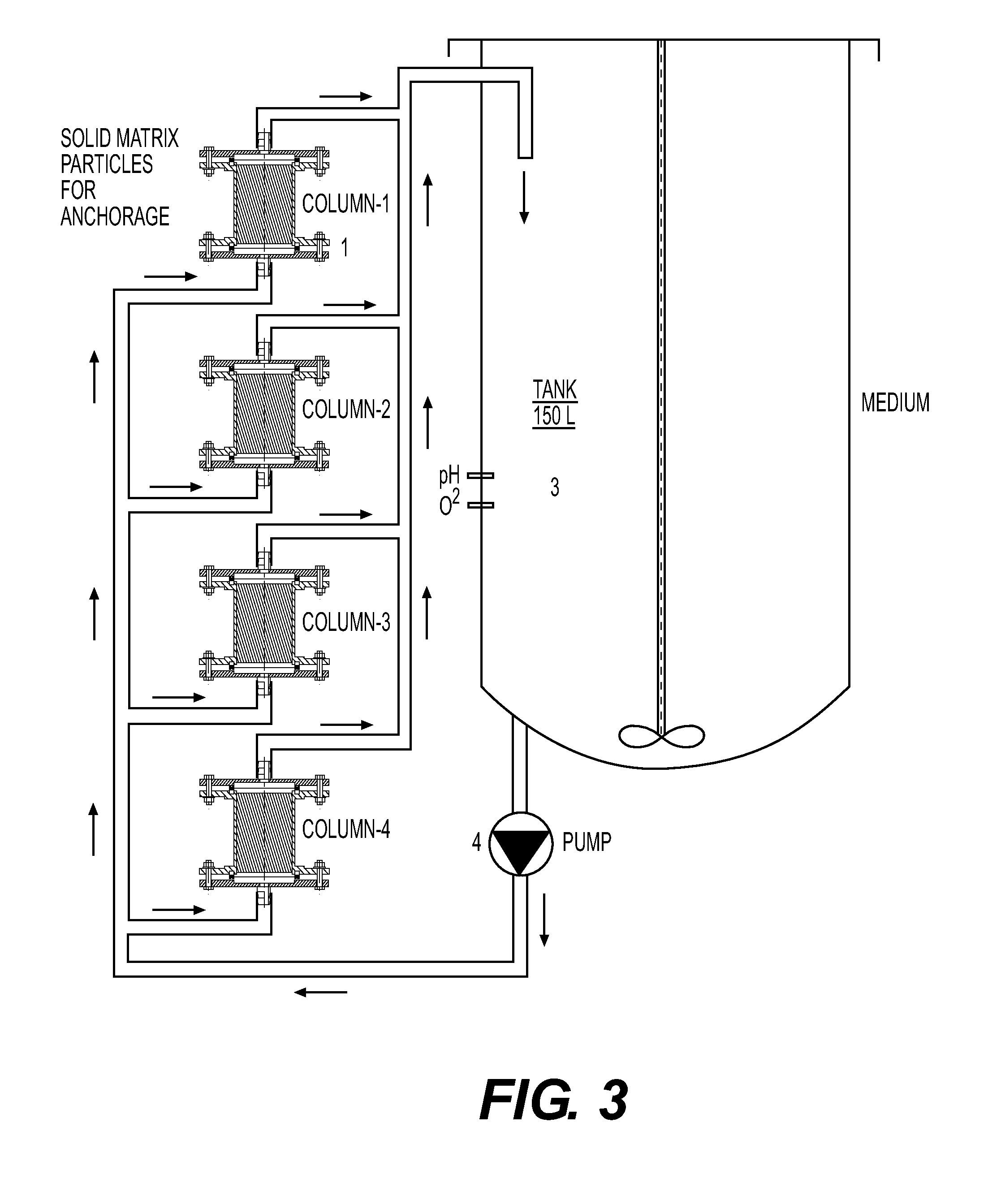Systems and Methods for Virus Propagation in Cell Cultures for Vaccine Manufacture
- Summary
- Abstract
- Description
- Claims
- Application Information
AI Technical Summary
Benefits of technology
Problems solved by technology
Method used
Image
Examples
example 1
[0055]Host cell MRC-5 were maintained routinely in tissue culture flasks (Corning, Corning N.Y.) in Dulbecco's Modified Eagle's Medium (DMEM) with 4.5 g / 1 glucose supplemented with 10% Fetal Bovine Serum. Retroviral vector producer cell line PM3218 was routinely maintained in tissue culture flasks (Corning, Corning N.Y.) in Dulbecco's Modified Eagle's Medium with 4.5 g / l glucose absent Fetal Bovine Serum. 20L of DMEM with 10% fetal bovine serum (FBS) was used as the cell culture medium for the bioreactor. Cytodex 1 microcarrier beads (Sigma-Aldrich, St. Louis Mo.) sterilized and washed according to the manufacturer's instructions, were loaded into the incubation chambers as the anchorage media.
[0056]Host cell MRC-5 were seeded in the incubation chambers at a concentration of 3×109 and were fed continuously with 20L of culture medium at a temperature of 37° C. for four days, or until the host cell concentration had reached 3×1010 or the maximum packed cell density that ca...
PUM
 Login to View More
Login to View More Abstract
Description
Claims
Application Information
 Login to View More
Login to View More - R&D
- Intellectual Property
- Life Sciences
- Materials
- Tech Scout
- Unparalleled Data Quality
- Higher Quality Content
- 60% Fewer Hallucinations
Browse by: Latest US Patents, China's latest patents, Technical Efficacy Thesaurus, Application Domain, Technology Topic, Popular Technical Reports.
© 2025 PatSnap. All rights reserved.Legal|Privacy policy|Modern Slavery Act Transparency Statement|Sitemap|About US| Contact US: help@patsnap.com



